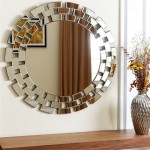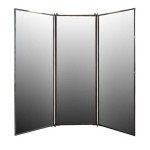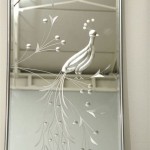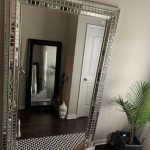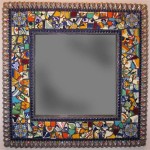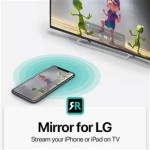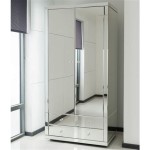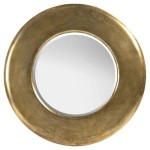How to Screen Mirror an Android Phone to a Windows 8 Laptop
Screen mirroring allows users to display the content of their Android phone's screen onto a larger display, such as a laptop. This can be useful for presentations, sharing photos and videos, or simply enjoying mobile games on a bigger screen. This article outlines several methods for mirroring an Android phone's display to a Windows 8 laptop.
Utilizing Miracast for Wireless Screen Mirroring
Miracast is a wireless display standard that allows devices to connect and mirror screens directly. Windows 8 has built-in support for Miracast, and many Android devices also offer this functionality. Compatibility depends on both the laptop's hardware and the Android phone's operating system version.
To use Miracast, one should first ensure that the Windows 8 laptop supports it. This can be verified by searching for "Project" in the Windows 8 start menu. If the option "Add a wireless display" appears, the laptop likely supports Miracast. On the Android phone, Miracast typically resides within the display settings or the "Cast" feature. The specific location may vary depending on the phone's manufacturer and Android version. Users should consult their phone's documentation for specific instructions.
Once both devices are confirmed to support Miracast, users can proceed with the connection process. On the Windows 8 laptop, open the "Devices" charm by swiping in from the right edge of the screen or by pressing the Windows key + C. Select "Project," then "Add a wireless display." The laptop will then search for available Miracast devices.
Simultaneously, on the Android phone, activate Miracast. The phone will then search for available displays. When the laptop appears in the list of available devices on the phone, select it. The phone's screen should then be mirrored on the laptop display. If a connection issue arises, ensure both devices are connected to the same Wi-Fi network.
Connecting through a USB Cable
While Miracast offers a convenient wireless solution, a wired connection using a USB cable can provide a more stable and lower-latency experience. This method typically requires third-party software on the Windows 8 laptop. Several applications facilitate this functionality, such as Vysor or scrcpy. These applications usually require enabling USB debugging on the Android phone.
To enable USB debugging, one must first activate "Developer options" within the phone's settings. This is typically done by repeatedly tapping on the "Build number" within the "About phone" section of the settings. Once Developer options are enabled, USB debugging can be found and activated within that menu.
After installing the chosen mirroring software on the laptop and enabling USB debugging on the phone, connect the phone to the laptop using a USB cable. The software should automatically detect the connected Android device. Follow the on-screen instructions provided by the software to initiate the mirroring process. Users may need to grant permissions on the Android phone to allow the software to control the display.
Employing Third-Party Apps for Screen Mirroring
Various third-party applications specialize in screen mirroring and offer features beyond the basic mirroring functionality. ApowerMirror, AirDroid, and TeamViewer are examples of such applications. These applications often support both wired and wireless connections, providing flexibility for different scenarios.
These applications usually require installation on both the Android phone and the Windows 8 laptop. Once installed, users must follow the specific instructions provided by the chosen application. Generally, these applications involve establishing a connection between the two devices, either through a shared network or a unique connection code. Post-connection, the mirroring functionality can be initiated through the application's interface.
When selecting a third-party application, consider factors such as supported features, ease of use, performance, and security. Reading reviews and comparing different options can help users make an informed decision.
Troubleshooting Common Screen Mirroring Issues
Occasionally, users may encounter issues during the screen mirroring process. A common problem is a lack of connection between the devices. Ensuring both devices are on the same Wi-Fi network is crucial for wireless methods like Miracast. Restarting both devices can sometimes resolve connection issues.
Another potential issue is lag or choppy video playback. This can be due to network congestion or insufficient bandwidth. Closing unnecessary applications on both devices and ensuring a strong Wi-Fi signal can improve performance. Opting for a wired connection using a USB cable can also mitigate latency problems.
If audio is not being mirrored, check the audio output settings on both the Android phone and the Windows 8 laptop. Ensure the audio output is set to the appropriate mirroring device. Consulting the specific troubleshooting documentation for the chosen mirroring method or application can provide further assistance.
In some instances, compatibility issues may arise due to hardware or software limitations. Verifying compatibility between the Android phone and the Windows 8 laptop before attempting to mirror the screen can prevent such issues. Keeping both devices' software updated can also improve compatibility and performance.

How To Screen Mirror Android Windows Pc

How To Cast Mirror Your Android Screen Windows 8 10 Pc

How To Mirror Phone Laptop Full Guide

Screen Mirror Android To Laptop With Windows Phone And Tablet
Use Wireless Screen Mirroring To Display Your Windows 8 1 Computer On The Tv Sony Usa

How To Mirror Your Android Screen A Pc Without Rooting

How To Natively Screen Mirror Your Android Phone Mac Or Windows Computer

Screen Mirroring Android To Pc A Guide February 2024

How To Cast Mirror Your Android Screen Windows 8 10 Pc

How To View An Android Screen On A Pc

